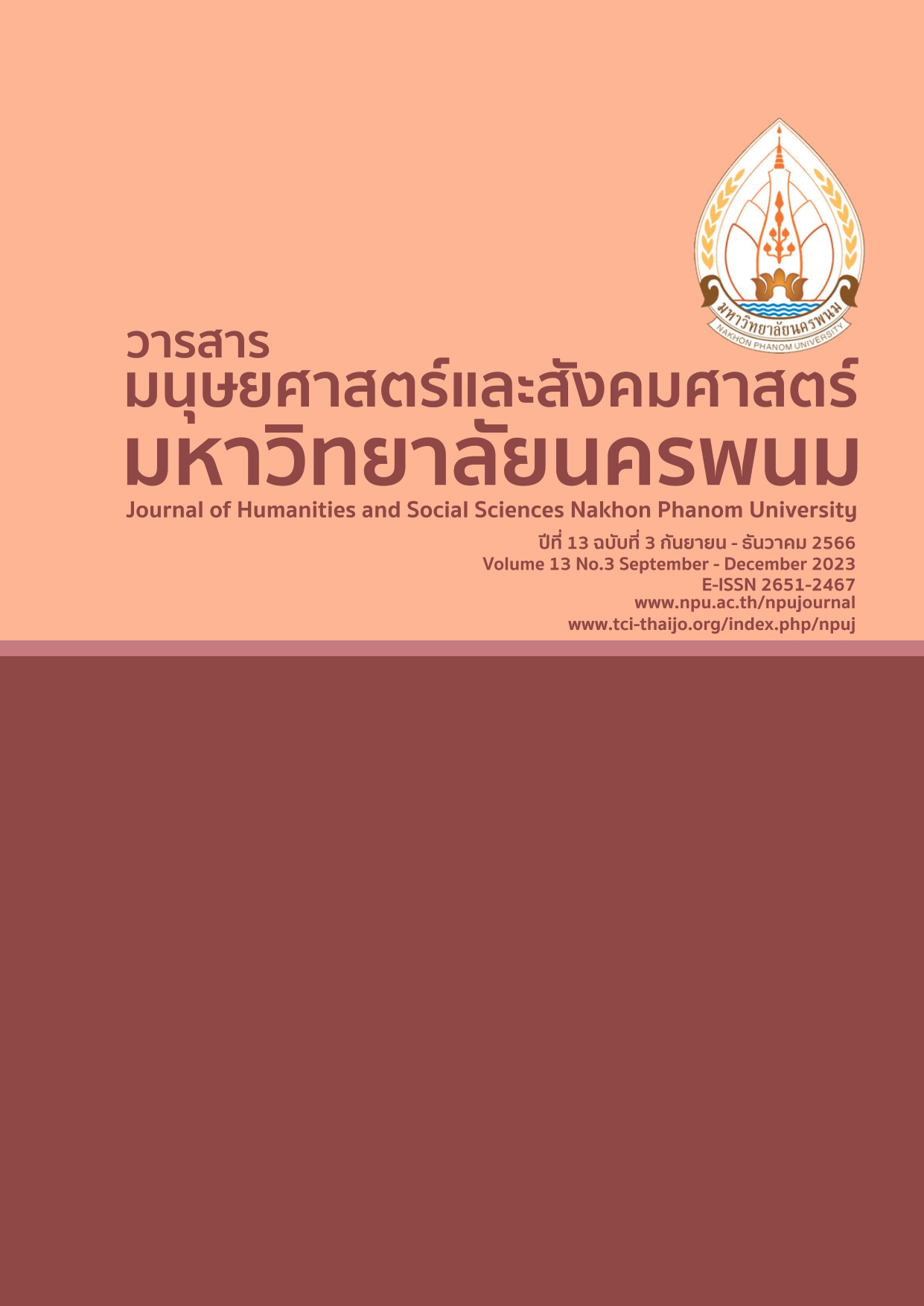The Effects of Omni-channel on Shopping Value Efficiency of Customer Loyalty : A Case of Lotus Super Centers in Thailand
Main Article Content
Abstract
This study aimed to examine the effects of omni-channel shopping value through omni-channel on customer loyalty: a case of Lotus Super Centers in Thailand. The data was collected from 309 customers using a questionnaire. The statistics used for data analyses consisted of multiple correlation analyses, and multiple regression analyses. The research findings revealed that shopping value through omni-channel in the aspects of physical store shopping value, mobile application shopping value, and social networking shopping value had an overall effect on customer loyalty. Therefore, retail business executives should give priority to selling products through the storefront and arrange products to attract consumers, focusing on fresh products with a clear price tag as well as developing modern applications for selling products through this channel that are easy to use and meet consumer needs. Over-presenting products should be avoided, and focus should be on selling products through online social networking channels because it is a modern channel and has a large number of users in order to create a competitive advantage.
Article Details

This work is licensed under a Creative Commons Attribution-NonCommercial-NoDerivatives 4.0 International License.
References
Aaker, D. A., Kumar, V., and Day, G. S. (2001). Marketing Research. (7th ed). New York : John Wiley and Sons.
Black, K. (2006). Business Statistics: for Contemporary Decision Making. (4th ed). New York : John Wiley and Sons.
Chopra, S. (2018). The Evolution of Omni-Channel Retailing and its Impact on Supply Chains. Transportation Research Procedia. 8(30),4-13
Eamkasamsilp, P. (2021). Patčhai thī mī phon tō̜ ʻakān tatsin čhai ʻasi nakhā nai hāng sapphasinkhā thē sakō lōtat ʻek phēn sō̜ sākhā thanon čhan Krung Thēp Mahā Nakhō̜n [Factors affecting decisions to purchase products at TESCO LOTUS express department store Thanonchan Branch, Bangkok. (Unpublished mater’ thesis)]. Ramkhamhaeng University, Bangkok, Thailand.
Greenberg, E. and Kates, A. (2014). Strategic digital marketing. USA : McGraw-Hil
Lveneevich, G. (2000). Organizations Behavior. (7th ed). Boston : Irwin.
Marchet, G. Marco, M., Sara, P., Monica R. and Elena, T. (2018). Logistics in omni-channel retailing: modelling and analysis of three distribution configurations. International Conference on Service Operations and Logistics, and Informatics September 18-20, 2018
Hamouda, M. (2019). Omni-channel banking integration quality and perceived value as drivers of consumers’ satisfaction and loyalty. Journal of Enterprise Information Management. 32(4),608-625. https:// doi.org/10.1108/JEIM-12-2018-0279
Ivanauskiene and Auruskevicien. (2009). Loyalty programs challenges in retail banking industry. Economics and Management. 14,407-412.
Keawmeesuan, A. (2020). Kānsưksā thưng khwām mī ʻitthiphon khō̜ng kāntalāt bǣp rai rō̜i tō̜ (Omni Channel Marketing) thī song phon tō̜ khwām phakdī khō̜ng lūkkhā ʻi kīa nai prathēt Thai [The study of the influence of Omni Channel Marketing that affects the customers loyalty of IKEA in Thailand (Unpublished mater’ thesis)]. Bangkok University, Bangkok, Thailand.
Klangchom, C. (2021). Kāntalāt rai rō̜i tō̜ thī song phon tō̜ ʻakān tatsin čhai sư̄ phalittaphan čhāk sūan Dusit hō mō̜ [Omni Channel Marketing Affecting the Purchase Decisions from Suan Dusit Home Bakery (Unpublished mater’ thesis)]. Silpakorn University, Bangkok, Thailand.
Meejinda, P and Sereerat, S. (2013). Konlayut kāntalāt læ kānwāngphǣn [Marketing strategy and planning]. Bangkok : Thammasan.
Nunnally, J. C. (1987). Psychometric theory. (2nd ed). New York : McGraw-Hill.
Nunnally, J. C. and I. H. Bernstein. (1994). Psychometric Theory. New York : McGraw–Hill.
Panyoyai, P. (2022). ʻitthiphon khō̜ng kāntalāt bǣp rai rō̜i tō̜ (Omni Channel Marketing) thī song phon tō̜ khwām phakdī khō̜ng lūkkhā rān UNIQLO nai čhangwat Chīang Mai [The influence of Omni channel marketing on customer loyalty at UNIQLO stores in Chiang Mai (Unpublished mater’ thesis)]. Maejo University, Chaing mai, Thailand.
Pummaphan, N. (2019). Khwāmsamphan rawāng phāplak ʻongkō̜n læ khwām phakdī khō̜ng lūkkhā . wān sān ʻī bāng kō̜k [Relationship between corporate image and customer loyalty]. Southeast Bangkok Journal. 5(1),103-111.
Rungruangjit, W. (2018). Itthiphon khō̜ng khunkhā nai kān lư̄ak sư̄ phalittaphan čhāk chō̜ ngō̜ thāng nārān, wep sai ʻǣ phō̜ phali khō̜chan thōrasap khlư̄anthī læ khrư̄akhāi sangkhom ʻō̜ nalai thī mī tō̜ khunkhā nai kān lư̄ak sư̄ phalittaphan čhāk chō̜ ngō̜ thāngkān čhat nāi bǣp būn nā kān khō̜ng phūbō̜riphōk čhē nœ̄ nawāi [The Effects of physical store, website, mobile application and social media shopping value on Omni Channel Shopping Value of Generation Y Consumer]. Graduate School Conference 2018 (p 682-693). Suan Sunandha Rajabhat University, Bangkok, Thailand.
Santiwong, T. (2010). Phrưttikam bukkhon nai ʻongkān [Individual behavior in organizations]. Bangkok : Charoenpat Printing House.
Srisa-at, B. (2017). Kānwičhai bư̄angton [Preliminary research]. (10th ed). Bangkok : Suviriyasan.
Suparedtanrong, C. (2020). Patčhai thī mī phon kap khwāmphưngphō̜čhai læ khwām čhongrak phakdī tō̜ ʻarān khrư̄angsamʻāng nam khao lāklāi trā sinkhā (Multibrand cosmetic store) [The factors affecting to the customer satisfaction and loyalty towards (multi- brand cosmeitcsstore) (Unpublished mater’ thesis)]. Mahidol University, Bangkok, Thailand.


